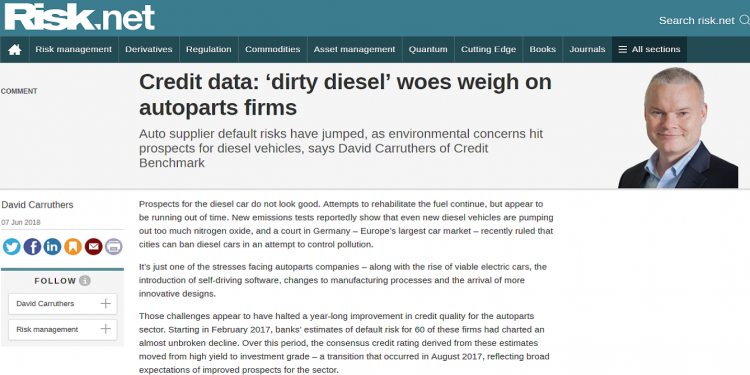
“Prospects for the diesel car do not look good. Attempts to rehabilitate the fuel continue, but appear to be running out of time. New emissions tests reportedly show that even new diesel vehicles are pumping out too much nitrogen oxide, and a court in Germany – Europe’s largest car market – recently ruled that cities can ban diesel cars in an attempt to control pollution.”
“It’s just one of the stresses facing autoparts companies – along with the rise of viable electric cars, the introduction of self-driving software, changes to manufacturing processes and the arrival of more innovative designs.”
In this series of monthly articles from Risk.net, David Carruthers, head of research at Credit Benchmark, discusses the global auto industry and sovereign credit risk across the Middle East in addition to global credit industry trends.
Read the full article here or in the June edition of Risk Magazine.